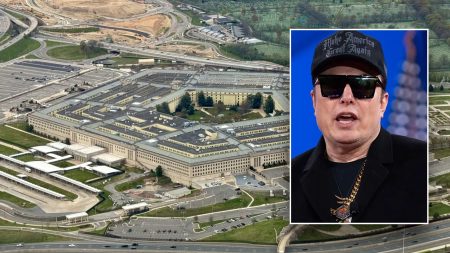A bipartisan House task force, composed of 13 members, convened to investigate the attempted assassination of then-President-elect Trump in Butler, Pennsylvania. The task force aimed to identify the security failures that allowed the incident to occur and recommend improvements to the Secret Service. Despite the highly charged political climate, the members emphasized their commitment to a bipartisan approach, working together as a unified body rather than divided along party lines. They lauded some initial reforms implemented by the Secret Service, such as increased drone usage and enhanced communication with local law enforcement. However, significant frustrations remained, particularly surrounding access to crucial information.
A central point of contention was the task force’s inability to examine the body of the gunman, Thomas Crooks, and the lack of access to his digital devices. This hampered their investigation into Crooks’s motive and whether he acted alone or had accomplices. The Department of Justice’s refusal to provide this information created a significant obstacle to the investigation, leaving key questions unanswered and fueling speculation. Acting Secret Service Director Ronald Rowe, the sole witness at the hearing, acknowledged the gravity of the agency’s failure and pledged accountability. However, he failed to provide specific examples of disciplinary actions taken, leaving the task force wanting more concrete evidence of reform.
Despite the bipartisan spirit and the seriousness of the issue at hand, the hearing was ultimately overshadowed by a dramatic confrontation between Rep. Pat Fallon, R-Tex., and Director Rowe. The exchange, described as a “thermonuclear fracas” and a “verbal brawl,” erupted over Fallon’s questioning of Rowe’s presence at a 9/11 memorial event with President Biden and other dignitaries. Fallon accused Rowe of prioritizing self-promotion and endangering the protectees by positioning himself near them without proper security protocol, suggesting Rowe was essentially “auditioning” for the permanent director position.
Fallon presented photographs showing Rowe near the principals at the 9/11 event, questioning Rowe’s role and whether he was acting as a protective agent. Rowe vehemently defended his presence, stating he was there to pay respects, emphasizing his personal connection to the tragedy as a first responder at Ground Zero. The exchange quickly escalated, with both men shouting and pointing fingers. Rowe accused Fallon of exploiting 9/11 for political gain, while Fallon accused Rowe of endangering the lives of President Biden and Vice President Harris. The intensity of the clash far surpassed typical heated exchanges in Congressional hearings, leaving observers stunned.
The confrontation effectively derailed the hearing, diverting attention from the substantive issues surrounding the attempted assassination and the Secret Service’s shortcomings. While the task force had aimed to present a united front and focus on constructive solutions, the explosive exchange dominated media coverage and public perception. The important findings and recommendations of the bipartisan effort were lost amidst the drama, highlighting the potential for personal conflicts to overshadow crucial policy discussions. The fallout from the hearing focused primarily on the Fallon-Rowe clash, rather than the critical security failures that prompted the investigation in the first place.
The aftermath of the hearing saw Fallon doubling down on his accusations, describing Rowe’s presence at the 9/11 event as a “vanity project.” He reiterated his concerns about Rowe’s actions endangering the protectees and questioned whether the Secret Service had learned from the attempted assassination in Butler. Rowe, however, declined to comment further, leaving the Capitol before reporters could question him. Fallon’s cryptic remarks after the hearing, alluding to potential retaliation, further amplified the tension and intrigue surrounding the incident. The dramatic clash served as a stark reminder of how easily personal conflicts can overshadow even the most important policy discussions, leaving crucial issues unresolved and public trust eroded.










